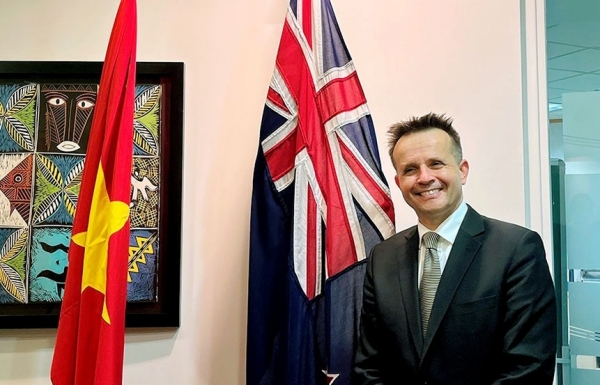
Vietnam-New Zealand Joint Economic, Trade Committee offering trade solutions
Latest
What was achieved at the eighth meeting of the Vietnam-New Zealand Economic and Trade Committee?
Vietnamese Deputy Minister of Industry and Trade Phan Thi Thang and I focused on practical things that will benefit our businesses, and also benefit New Zealanders and Vietnamese on both sides, because of the way in which we can support trade flows.
We discussed some of the customs procedures on both sides that would make it easier for our companies to export to one another. We also discussed the need to have electronic certification and to set up a process by which we could audit each other’s horticulture sectors, which our two leaders say are essential.
For example, when they agreed on the export of Vietnamese limes and pomelo to New Zealand, we were able to send squash and strawberries to Vietnam. Besides that, we agreed to increase work together to find ways to facilitate more of this kind of trade.
In addition, we elaborated on the bilateral relationship. Our leaders are committed to making the strategic partnership grow so that bilateral trade can reach 2 billion USD. We are nearly there and at the meeting, we talked about how to get the extra bit more as soon as possible. These were very much about practical things to support exporters to do more business and to create more trade between our two countries.
 |
| Vangelis Vitalis - New Zealand’s Deputy Secretary of Foreign Affairs and Trade. (Photo: VIR) |
In November last year, Vietnamese passion fruit and grapefruit were officially allowed to be imported into New Zealand. How has New Zealand’s market received this development, and can Vietnamese fruit compete there?
Vietnam has a strong reputation, particularly for producing high-quality and tasty fruit. Our prime minister said lime is the “green gold” that Vietnam has produced for us. New Zealand can’t grow the kinds of lime and the quality of lime that Vietnam can produce. We certainly can’t grow pomelo, and I’d like to think that we can grow strawberries and squash in a way that Vietnam cannot, so we have complemented one another.
In the future, we can send products like kiwi and apples that we grow well, and Vietnam will send us the products that it grows well, such as tropical fruit. And for now, we’re pleased for the strawberry farmers in New Zealand and the squash producers to export their products to Vietnam for the first time.
Do you have any suggestions for other Vietnamese products to head to your country?
I’m a big fan of the mango and so I would certainly welcome more Vietnamese mangos in New Zealand. We talked to the Deputy Minister of Industry and Trade at the meeting about the chance for more joint trade-economic cooperation and how we facilitate more of that trade, in terms of items like that.
But the idea is that we can try to find a way that doesn’t involve just thinking about individual products, as that takes everyone involved a long time. Both sides need to think about how we could do this for a much bigger range of products across the whole horticultural sector so that Vietnam can send us products and we can send other items back, which are good for both economies and good consumers.
Vietnam and New Zealand are both members of new-generation multilateral trade agreements. How can we make the best use of the cooperation and preferential mechanisms that mutual free trade agreements bring?
The first thing we need to do is we need to find ways to educate our businesses about the opportunities that exist in our markets because of the advantages we now have from these trade agreements.
In terms of the Comprehensive and Progressive Agreement for Trans-Pacific Partnership and the ASEAN-Australia-New Zealand Free Trade Area, we have expedited customs procedures so that products that arrive in Vietnam will be cleared within six hours of customs.
For Vietnam, we also have additional fast-track certification requirements, which means that Vietnamese producers can sell more quickly into our market. But I’m certain that many Vietnamese and New Zealand businesses are not aware of this massive advantage they have over their competitors.
For us to compete in the Vietnamese market, our big competitor is Chile, but Chile doesn’t have the same free trade deals so we are hopeful that we offer a bit of an advantage to New Zealand producers in the Vietnamese market, and for Vietnam.
Recent changes happening in our two economies will be the driver of growth between us, and these agreements that we’ve negotiated are just enabling this trade. Our job is now to make sure that businesses and individuals take advantage of these agreements.





















